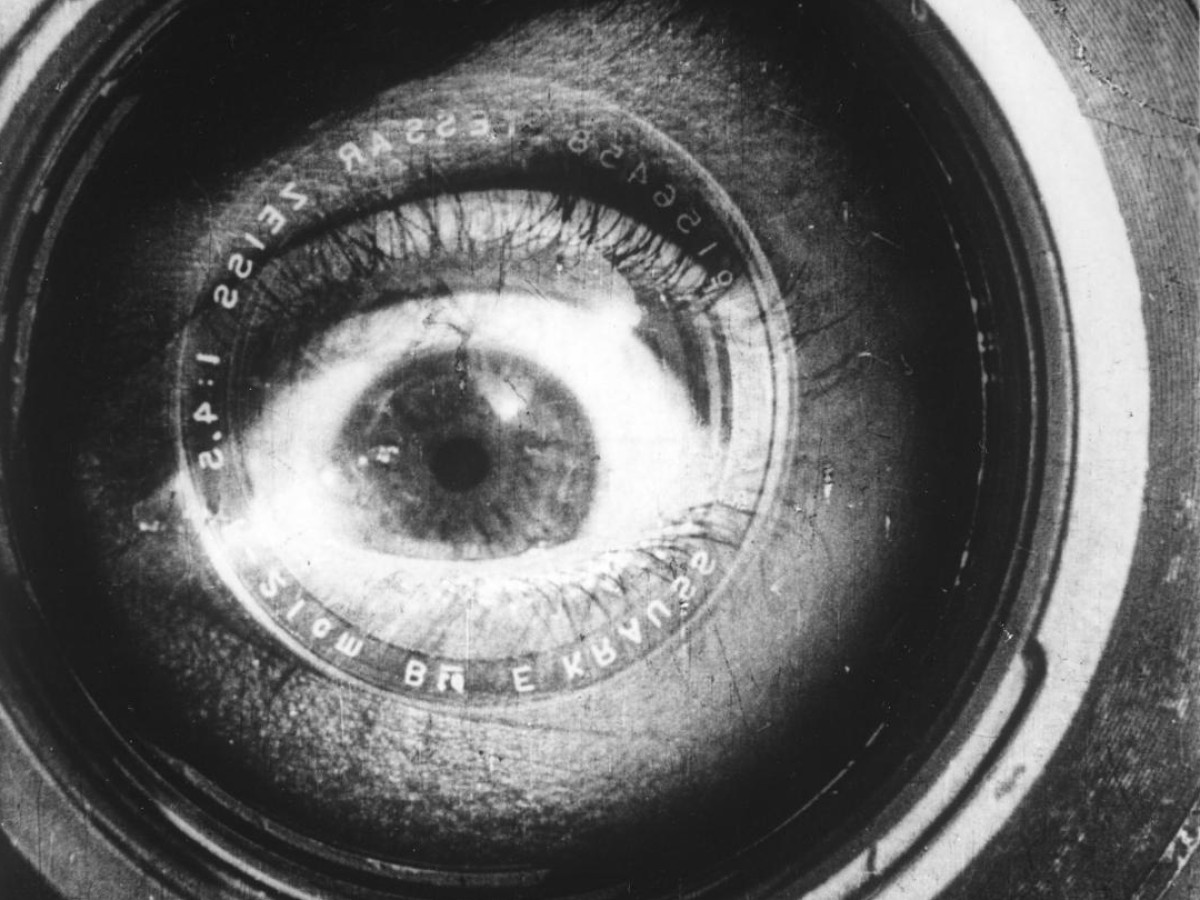Dziga Vertov
May 1 to 28, 2006
Dziga Vertov (1896–1954), born as Denis Arkadjevic Kaufman in Bialystok (Poland), is today unanimously acclaimed as one of the greatest filmmakers ever. In theory and practice, Vertov and his kinoki group searched for the essential characteristics of film in relation to the other arts; they promoted a cinema capable of perceiving-creating a heretofore unseen world; and they tried to prove the necessity of film for the development of a new society.
Inspired by Futurism, Vertov made a radical departure from the theatricalized, romanticizing and psychologizing cinema of illusion. For him, film was identical with the documentary form – which he did not see as "beautiful" or "aesthetic" films of nature, but as an art of rhythm, movement and speed which has an immediate and subversive effect on society's consciousness. In his writings and through his extravagant and incessantly surprising films, he sums up the inherent newness of the medium: "I am the eye of the film. I am the mechanical eye. I am the machine which shows you the world as only I can see it."
From the newsreels Kinonedelja ("Kino-Week”, 1918/19) and Kinopravda ("Kino-Truth”, 1922-25), which offer fascinating glimpses of the early Soviet Union and demonstrate the rapid development of Vertov's film language, to the feature-length masterpieces Kinoglaz (1924), The Sixth Part of the World (1926), The Eleventh Year (1928), Man with a Movie Camera (1929), Enthusiasm (1930) and Three Songs of Lenin (1934/38), Vertov's works are also always films about the whole world.
His aims were unprecedented and utopian at the same time: "From the mosques of Bucharov to the steel girders of the Eiffel Tower, from the shafts of the metal works in the Ukraine to the sky-scrapers in New York – Vertov wanted to be present here, there, and everywhere at once, as if he feared overlooking something significant. His ‘Man with a Movie Camera' raced in cars, flew planes, peered into windows and even ventured underground. The whole world was his, and he felt at home everywhere. (...) For the avant-garde of the 1920s, the unity of the world was believed to herald the dawn of a global revolution, that would very soon engulf the planet." (Vladimir Nepevny)
Around 1930, Vertov was close to becoming an international celebrity. He toured Western Europe twice and his lectures and film presentations were admired by the cultural and intellectual elite, ranging from Walter Benjamin to Charles Chaplin. His films rarely got a regular theatrical release outside of the Soviet Union, but rumours of their uniqueness quickly reached everyone interested in the medium.
At the same time in Russia, however, his projects were increasingly obstructed. In the Soviet Union of Stalin, most film artists were spared the gulag or murder, but their working conditions and individual projects were subject to massive restrictions. At the end of his life, Vertov envied his friend Mayakovsky; even though he was driven to suicide, his poems had at least survived in libraries. His own work, on the other hand, as Vertov writes in his diaries, was mutilated, miscopied, mangled, thrown away, in a word "obliterated in its entirety".
It is primarily thanks to the efforts of film museums and archives that things today don't appear as dismal as they were in Vertov's lifetime. Starting in the mid-1960's, the Austrian Film Museum has collected and shown his films, partially restored them, published a selection of his diaries, and, working in close association with his widow and most important collaborator, Elizaveta Svilova, acquired and exhibited numerous original documents (writings, sketches, photographs and posters) created by or pertaining to Vertov.
The second wave of Vertov's reception in the West has been substantially defined by these efforts. The "Silent Vertov” season and exhibition at the Pordenone film festival (2004), supported by the Austrian Film Museum, and the widely acclaimed Film Museum DVD of Enthusiasm (2005) have continued this tradition which now sees a new high point with the current Retrospective.
This show, organized in close cooperation with the Russian State Archive for Film and Photo Documents (RGAKFD), goes far beyond the scope of any Vertov presentation in Vienna to date. It assembles several works which hitherto have been virtually unknown in the West. Man with a Movie Camera, one of the most influential films of all time, will be shown in a "live reconstruction” of the unabridged version in full silent frame. The season is also accompanied by a number of lectures, introductory talks and podium discussions with international guests such as Peter Sellars, Yuri Tsivian, Wolfgang Beilenhoff, Aleksandr Derjabin, Oksana Sarkisova, Thomas Tode and many others.
At the Opening, a new and lavishly illustrated Film Museum book in English and German will be presented: Dziga Vertov. The Vertov Collection at the Austrian Film Museum, edited in collaboration with Thomas Tode and Barbara Wurm, includes essays on "Vertov and Vienna”, writings and drawings by the artist, more than 200 photographs and a large catalogue section detailing the elements of the Collection.
This project could only be realized thanks to the support of many individuals and institutions. The ERSTE BANK is the main sponsor of the three-part "KINO Revolution" at the Film Museum. Major thanks go to Ljudmila Petrovna Zaprjagaeva, Natalja Kalantarova and Elena Kolikova (RGAKFD), Robert Gerschner, Sabine Gaar and Guido Bruck at the Austrian Foreign Ministry, and to Barbara Wurm and Aleksandr Derjabin for their enormous contributions towards making Vertov "legible” for a new generation.
